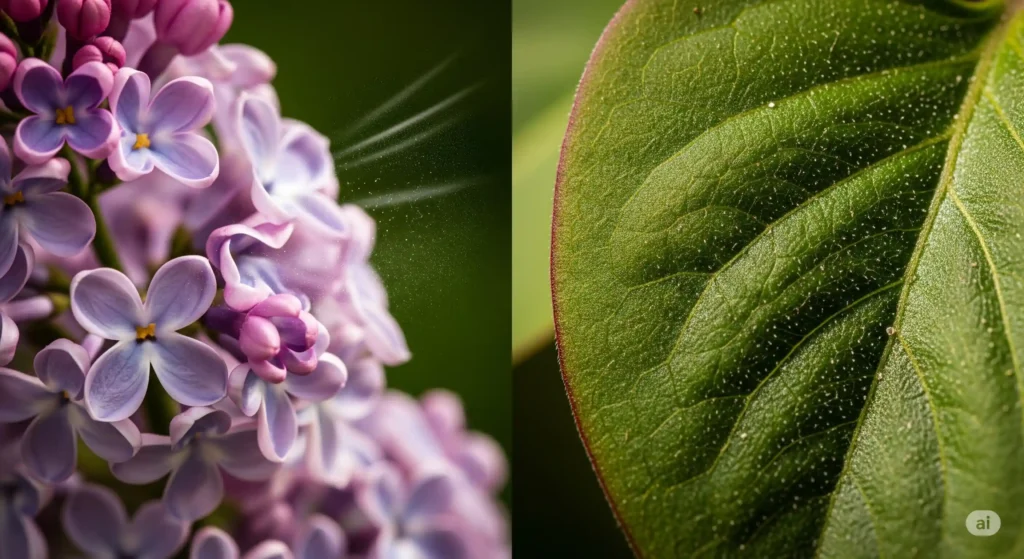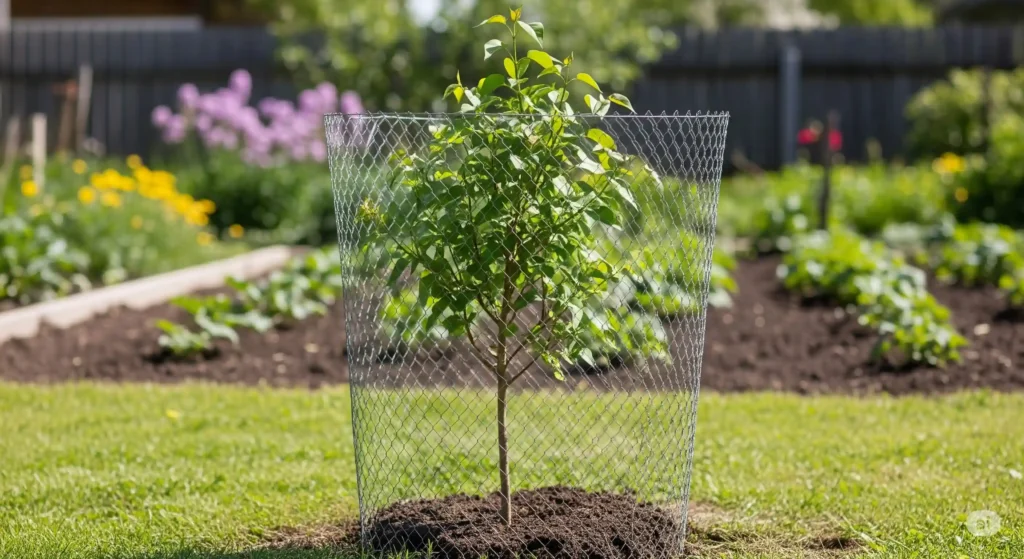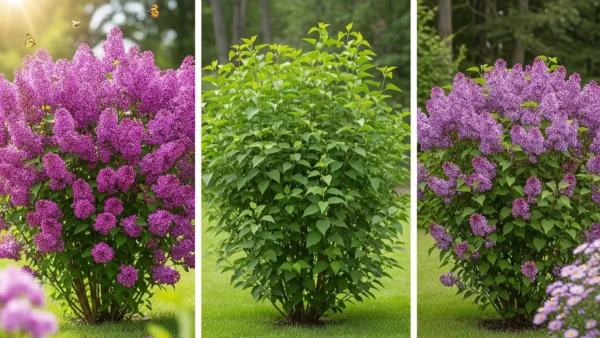Are Lilacs Deer Resistant? The Shocking Truth About Keeping Your Flowers Safe!
Hey there, other plant enthusiasts! If you want to fill your garden with the heavenly scent and beautiful blooms of lilacs, but you live near deer, you may have wondered, “Are my precious lilacs going to be on their menu?” This is a question I hear all the time, and it’s very important for keeping the peace in our gardens.
So, let’s get to the point: do lilacs keep deer away? Most gardeners and horticultural experts agree that lilacs are normally thought to be deer-resistant. However, and this is a very important “but,” they are not completely deer-proof. You could say that lilacs aren’t their first, second, or even third pick at the garden buffet. Deer usually skip lilacs in favor of more tasty and tender foods, but there are times when they might nibble on them, including when food is very scarce or when local deer are especially brave and have developed a liking for them.
What makes them not very appealing? That powerful, sweet lilac smell that we all love can keep deer away because their nostrils are so sensitive that they can’t handle it. Also, depending on the type, their leaves might be a little leathery or even a little fuzzy, which isn’t as tasty as leaves that are softer and more juicy.
In this tutorial, we’ll talk about why deer usually don’t eat lilacs, look at times when they can be at risk, and most importantly, provide you useful ideas and tactics to keep your fragrant beauties safe, sound, and wonderfully gorgeous. Are you ready to discover how to best care for your lilacs? Let’s get started!
Why deer eat what they do at Bambi’s Buffet
Before we discuss more about lilacs, it’s helpful to know a little bit about the animals who come to our gardens and what they like to eat. Knowing what makes them twitch (or eat!) can really help us keep our plants safe.
First of all, deer are browsers, not grazers. This implies that they don’t usually eat your grass like sheep do. Instead, they enjoy to pick and choose which leaves, twigs, buds, and flowers to eat from woody plants (such shrubs and trees) and forbs (non-woody flowering plants).
So, what makes a deer want to eat a certain plant? In general, they are drawn to:
- Tender new growth: They love the tender, juicy shoots that come up in the spring.
- A lot of water: People generally like plants that are well-watered and juicy.
- Not having a strong smell or taste: Deer usually like things that are bland.
- They don’t like things that are hard or rough to chew, thus they prefer smooth, non-fuzzy, and non-prickly textures. Think about it: would you want a mouthful of fuzz or thorns?
There are also a number of things that affect their decisions on any given day or season:
- Time of year: Deer are less selective in late fall and winter, when their favorite food sources are hard to find and the ground may be covered in snow. When you’re hungry, even plants that don’t look good can seem worth a try.
- Deer density in the area: If there are a lot of deer fighting for food that isn’t very common, they will try new items that they might not have tried before.
- Availability of preferred food sources: If your garden is an oasis surrounded by acres of their favorite natural browsing, your less-tasty plants might be safer. On the other hand, if there isn’t much natural food, your garden seems like an all-you-can-eat buffet.
We can better understand where lilacs fit into a deer’s diet and why they often receive a pass if we know what they look for and what they strive to avoid.
How to Tell whether Lilac Shrubs Can Survive Deer Attacks: Defense Mechanisms
Now, let’s talk about the lilacs we love. Why do deer frequently turn their noses up at these pretty flowers that smell good? It turns out that lilacs have some natural ways to protect themselves.
Their Strong Fragrance
Their Strong Fragrance is without a doubt the most important thing about them. That strong, pleasant smell that humans love so much can really be too much for deer and make them sick. Lavender, rosemary, and mint are just a few of the intensely scented plants that deer won’t eat. Think of it as a natural “No Vacancy” sign for deer.
Leaf Texture
Next, there’s the Leaf Texture. The leaves of lilacs aren’t the softest or most sensitive on the block. Depending on the type, they can be a little leathery, a little rough, or even have a small fuzziness. Deer usually like leaves that are smoother and more delicate, therefore the texture of lilac leaves may make them less tasty to eat.

Chemical Compounds
Some plants also have chemicals in them that make them taste bad or moderately poisonous, which keeps herbivores away. This isn’t usually given as a main reason why deer don’t like common lilacs (Syringa vulgaris), but it’s likely that some species in the larger Syringa genus have chemicals that make them less appealing to deer.
In addition to these specific qualities, General Observation and Gardener Reports always mention lilacs as “deer resistant” or “seldom severely damaged.” Many expert gardeners and horticultural extension offices around the country advocate lilacs for gardens where deer are present. This extensive anecdotal evidence is very strong.
It’s crucial to know what the “Scale of Resistance” is. When we say a plant is “deer resistant,” we don’t imply it’s “deer-proof.” Very few plants are genuinely “deer-proof,” especially when deer are hungry. There is a range of resistance. Some plants are “rarely damaged,” some are “seldom severely damaged” (lilacs usually belong into this group), some are “occasionally severely damaged,” and some are “frequently severely damaged” (deer sweets!). Thank goodness lilacs are on the more resistant end of this scale.
When “Resistant” Isn’t Enough: Things That Can Make Your Lilacs a Target
So, if deer usually don’t eat lilacs, why do we hear stories about their being nibbled? There are always exceptions to the rule when it comes to gardening. There are a number of things that could make your lilacs a target, even if they are typically safe.
- Extreme lack of food is a big one. When the winters are really bad and the snow is really deep, it covers up their typical food. Or when there is a really bad drought and there isn’t much other greenery, starving deer will eat virtually anything to stay alive. When things become very bad, deer might eat vegetation they ordinarily wouldn’t, like lilacs, even though they know they shouldn’t.
- A lot of deer in your region can also make you more adventurous when it comes to food. If there aren’t enough natural foods for all the deer, they will have to try new plants that they might not have otherwise eaten. More deer equals more competition and less picky eating.
- Young, tender plants are often more likely to get hurt. Deer may be more interested in newly planted, little lilacs, especially those that are putting forth soft, juicy new growth in the spring. These bushes are less woody and more established. Deer are also curious animals, so they might “taste-test” new plants in the garden, even if they don’t end up liking them very much.
- Are some kinds of lilacs more likely to get sick? This is a tough one. Most common lilacs and their hybrids have powerful scents and moderately tough leaves, which make them resistant to pests. However, some newer hybrids that were developed for other attributes may have slightly softer early growth. But a lot of the information on this is based on stories rather than controlled studies. Most of the time, the basic resistance runs in families.
- Don’t take Local Deer Palates lightly. Believe it or not, deer in one location might learn to like different things than deer in another place. This can happen because their mothers taught them what to eat. So, something that is always overlooked in one garden might be tried out in a nearby county from time to time.
- Lastly, think about what is growing around. Deer love to eat plants like hostas, daylilies, and tulips, which are also known as “Deer Candy.” If your lilacs are near these plants, they could get hurt when the deer eat them. It’s like a kid going for a cookie and accidently knocking over the vegetables next to it that isn’t as interesting.
Do some types of lilacs keep deer away better than others? A Closer Look
A lot of gardeners wonder this: if I pick a certain kind of lilac, will it be safer against deer? It’s a good idea, but the solution isn’t always clear.
Most of the time, common lilacs (Syringa vulgaris) and their numerous lovely hybrids have comparable traits that make them resistant to deer. The smell and feel of the leaves are pretty much the same for all of them, which is fantastic news!
When we look at Species Variations, there are some stories and experiences from gardeners that suggest some Syringa species could taste really bad. The Dwarf Korean Lilac (Syringa meyeri ‘Palibin’) and ‘Miss Kim’ Lilac (Syringa patula ‘Miss Kim’) are two examples of plants that are generally praised for being hardy and are always regarded as deer-resistant. Their small size and the fact that their leaves are occasionally a little different in texture or smell might have something to do with it, but they are nonetheless resistant to a wide range of “lilac” plants.
It’s crucial to underline again how vulnerable new growth is. If deer are brave, interested, or hungry enough, they could eat the very fresh, soft spring shoots of practically any lilac. The first soft leaves are just more enticing than the tougher, older ones.
One thing to remember is that there aren’t any definitive scientific studies that directly evaluate deer preferences across a large range of lilac cultivars in controlled settings. A lot of what we know comes from a lot of gardener observations, nursery ratings, and university extension lists. These are very useful, but they aren’t always controlled scientific trials.
So, the best thing to do is to Focus on General Resistance. There may be little differences in how appealing different species of lilacs are, but choosing any healthy lilac variety is usually a smart way to make sure that your plants won’t attract deer. Most of them, if not all of them, have the main traits that keep deer away.
How to Keep Deer Away from Lilacs: Useful Tips
Lilacs are usually on the “safer” list, but if you live in an area with a lot of deer or have had problems in the past, you might want to take extra care to preserve these aromatic treasures. Here are some useful tips:
Repellents (Use with care and knowledge)
Deer repellents can be highly effective but require constant application.
- Types: There are two main types of repellents: scent-based ones, which use things like predator urine, rotten eggs, garlic, or scented soaps to make the plant smell awful; and taste-based ones, which use capsaicin or bittering compounds to make the plant taste bad.
- How they work: The goal is to make your lilacs smell bad or taste bad to deer.
- Why it’s important to rotate and reapply: Deer might get habituated to the same smell or taste over time, so it’s a good idea to switch between different types of repellents. You will also need to put them on again often, especially if it rains or there is a lot of dew, and when new growth starts to appear. Always do what the label says!
- You may buy a lot of commercial deer repellents at garden centers, or you can make your own by hanging bars of highly scented soap or spraying egg-water on them. However, commercial products are usually made to last longer.
Physical Barriers (Usually the Best for Determined Deer)

A physical barrier is usually the best way to keep deer out if they keep coming back.
- Fencing: The best approach to keep deer away is to keep your fence in good shape. A fence needs to be at least 8 feet high for major deer problems because deer are great at jumping. You may attempt lower fences to keep them away, or you could use slanted barriers, which are tougher for them to judge.
- Individual plant cages or nets: Making a basic cage out of wire fencing or covering young, weak lilac plants with bird netting (make sure it’s tight so birds don’t get stuck) will keep them safe until they get bigger and stronger.
- Fishing line trick: Some gardeners have had success by putting strands of fishing line that are almost undetectable at different heights (for example, 18 inches and 3 feet) around the plants or garden beds. Deer don’t see it well, and when they bump against it, they are scared.
Scare Tactics (Can Work for a While, but Deer Often Get Used to Them)
These tricks are meant to scare deer away.
- Lights or sprinklers that turn on when you move: A unexpected spray of water or a bright light can scare deer away, at least at first.
- Wind chimes, reflective tape, or pie tins: Deer might get scared by sounds and lights that come out of nowhere.
- The bad news is that deer are smart animals, and if they figure out that these objects aren’t really dangerous, they might learn to disregard them.
Companion planting (putting plants in the right places to hide and confuse them)
This is a more subtle plan that will take longer to work.
If you want to keep deer away from your lilacs, try planting them with other plants that smell strong and are hard for deer to get to. Lavender, rosemary, sage, catmint, peonies, daffodils, or ornamental grasses are all good plants to have around. The theory is that the strong smells of these other plants can help cover up the lilacs’ smell (which isn’t very pleasant), or the planting area as a whole isn’t very intriguing to deer, so they hunt for food elsewhere.
Location, Location, Location (Making the Most of Your Landscape)
Plant your lilacs as close to your house, patio, or other busy areas as you can. Deer usually don’t want to go too near to people. Putting them in a more visible front yard might also keep them safer than a position in the back of the house.
Oh no, they nibbled! What to Do If Deer Eat Your Lilacs
So, even though you tried your best, or maybe because you didn’t expect any problems, you found some deer damage on your lilacs. First, take a deep breath; it happens to the best of us!
Check the Damage
Look closely. Are they only nibbling on a few soft tips, or have they done more serious browsing, such removing leaves or destroying small branches?
Don’t worry; the good news is that lilacs are usually strong and hardy bushes. Plants can normally bounce back rather well unless the damage is too bad and happens to a very young or already stressed plant.
Cutting for Recovery
- The first thing you need to do is cleanly cut off any stems that are broken, ragged, or obviously damaged. Make your cuts slightly above a healthy blossom or side branch with sharp pruners. This keeps illness from getting into broken tissues and tells the plant to put its energy into growing healthy.
- If the damage isn’t too bad, don’t prune too much. Taking away too many leaves can make the plant even more stressed. Just clean up what needs to be cleaned.
Give Supportive Care
- Make sure your lilac gets enough water, especially during dry seasons, to help it become better. For recuperation and new growth, it’s important to stay hydrated.
- If the damage happened before their normal spring feeding, a modest application of balanced fertilizer in the spring can assist new leaves and shoots grow. But don’t go overboard, because too much fertilizer can also be bad for you.
Take steps to protect yourself
- Sadly, if deer have eaten your lilacs before and thought they were even a little bit good (especially if there wasn’t much other food around), they might remember your garden as a place to munch on. This is when you should use some of the repellents or think about the physical barriers we talked about in the last section to stop it from happening again.
In conclusion, you can enjoy your lilacs even in deer country.
So, let’s get back to the core question: Do lilacs keep deer away? Yes, for the most part, this is a good solution! Deer don’t like them very much, and in a lot of gardens, they won’t touch them at all.
Their great smell and rough leaf texture keep pests away naturally. But we’ve also found that even these tough beauties can sometimes get a little browsing when there isn’t enough food, there are a lot of deer, or the plants are extremely young and fragile.
But here’s the best part: you can definitely grow and enjoy these gorgeous, aromatic bushes if you know how deer act and take a few precautions if you live in a high-pressure area. You have tools at your disposal, whether it means picking a good place to plant, applying repellents properly, or just keeping an eye on your young plants.
So, go ahead and plant those lilacs! If you know a little bit and maybe take some extra care, you can still enjoy their beautiful flowers and lovely aroma, even if Bambi and his companions happen to be in your neighborhood. Have fun planting!
A lot of people want to know about lilac deer resistance.
When gardeners consider about lilacs and deer, they often have these questions:
Do deer like to eat lilac flowers?
Deer are less likely to eat lilac blossoms than the leaves of plants that taste better because the flowers smell so strong. But if deer are particularly hungry and there isn’t much food around, they might eat anything they can find, even lilac buds or open flowers. In general, the leaves of other plants are more likely to be damaged.
Do deer like dwarf lilacs more or less than big ones?
The smell and texture of a lilac’s leaves are what make it naturally resistant to deer. These traits are usually the same for all sizes and shapes of the same variety of lilac, like a dwarf Korean lilac and a regular common lilac. It’s true, though, that smaller, younger plants of any kind might be more likely to be “taste-tested” by curious deer or hurt more by even a little bit of browsing, just because they don’t have as much plant mass overall.
Do I have to keep deer away from my lilacs all year?
The amount of deer pressure might change throughout the year. It is usually highest during a few important times:
- Late fall and winter: This is when a lot of their natural food sources are hard to find or are covered in snow.
- Early spring is when many plants, including lilacs, start to sprout new, delicate leaves. This makes them look especially nice.
These are the times when you need to be extra careful or make sure your safety measures are in place, especially if you live in a place with a lot of deer. In the summer, when there is a lot of food, lilacs are usually at the bottom of their list.
What is the best technique to deter deer from eating lilacs?
If you have a lot of deer problems that won’t go away, a well-kept physical barrier, like an 8-foot-tall fence, is usually the best way to keep them out. Consistent application of efficient deer repellents (rotated so that the deer don’t become habituated to them) and selective companion planting can work extremely well for less intense pressure or as an extra measure.
Will the plant die if deer eat my lilac?
Not usually. Lilacs are very strong and hardy bushes. They can usually bounce back from light to moderate browsing, especially on a well-established plant, with some extra care, including proper watering and maybe some trimming to clean up. Repeated and severe browsing, especially on a very young or already stressed plant, could be worse over time, but a single episode of eating is not likely to kill a healthy lilac.









